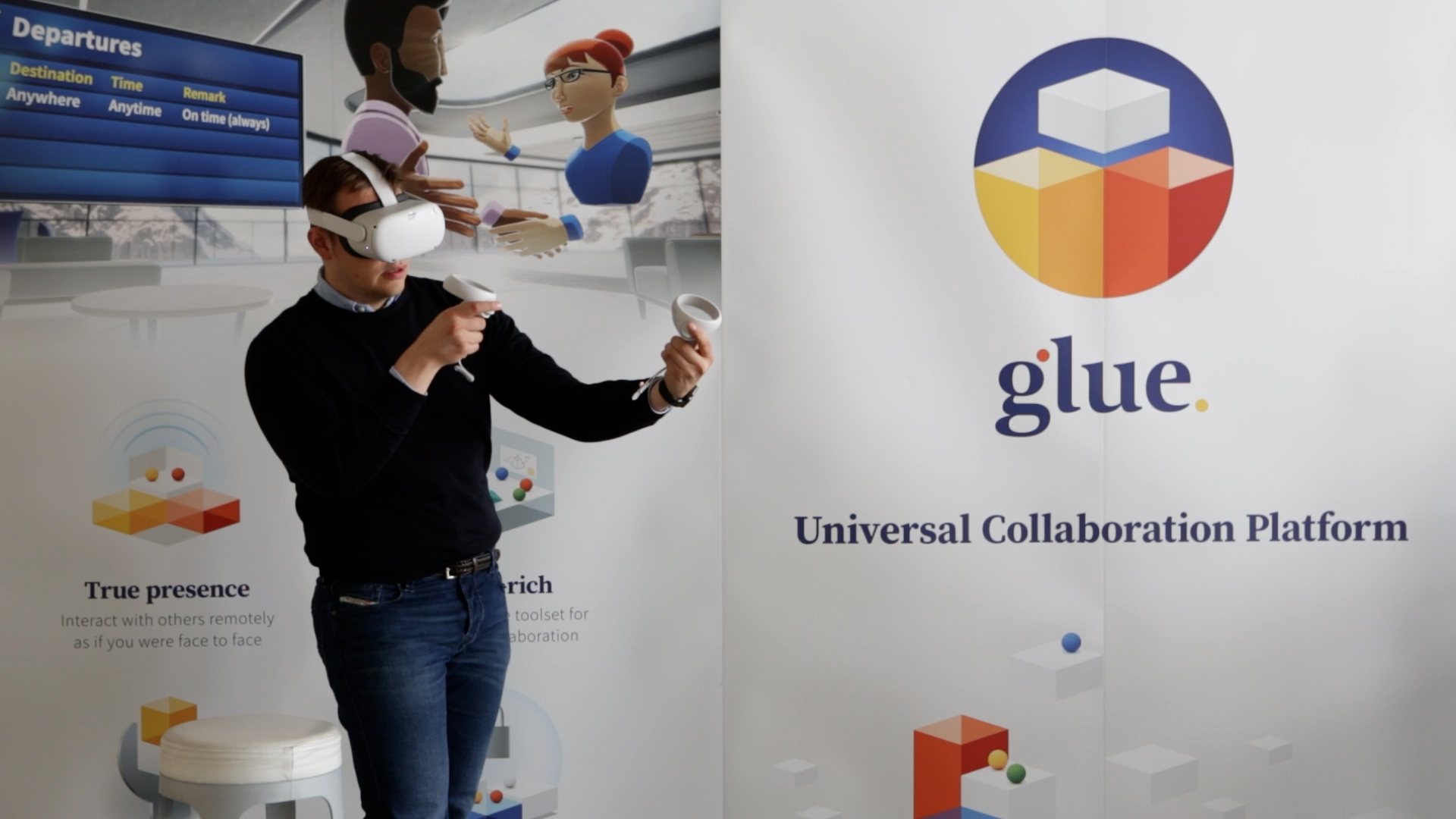As most VR practitioners will tell you, creating a genuine feeling of immersion is hard.
To convince someone that they are in another place, we must make a powerful appeal not only to their visual and haptic senses, but their ears too.
In fact, audio is often the maker or breaker of a good VR experience.
“A well-designed spatial soundscape is crucial if you want to make people feel that they are truly present and ready to engage in a virtual space,” says Helsinki-based sound designer Veli Laamanen.
Veli has spent the last two years on a mission to perfect the audio experience at Glue. The goal has been to ensure that there’s accurate direction and depth to voices and sounds. What users hear must knit tightly with what they see, with avatar mouths moving in sync with voices. And the same high-quality audio experience needs to scale for all users, including those with less powerful VR headsets or using Glue in desktop mode.
The work has progressed well. “We have paid a lot of attention to the sounds of conversations,” Veli explains, emphasizing the key distinction between virtual collaboration in Glue and gaming-based VR experiences that might be packed with music and sounds effects.
“Achieving immersive audio is all about trying to emulate the natural way in which we communicate in real-world environments. We want users to feel they are having natural conversations in surroundings that relax the mood and are distraction-free.”
In physical settings, people are used to the phenomenon of voices and sounds fluctuating, depending on how far they are away. Sounds come from the sides or behind us, as well as from above or below. Obstacles, walls, and the texture of materials also affect how sounds are heard.
In other words, the audio design will be different in every space.

Audio is often the maker or breaker of a good VR experience.
This has been the approach at Glue. For each of our Glue Spaces, we implement a unique spatial sound design.
Teams sharing the same virtual space can have private discussions, just as they would in meetings at the office.
Spatial audio also helps users to recognize who is speaking, in contrast to the ‘flat’ audio of conventional audio and video conferencing software where people are prone to talking over the top of each other.
“I am pleased to say that we have an audio experience that even on low-end devices gives accurate direction and depth to voices and sounds and ultimately a strong sense of immersion, which is our goal,” says Veli.
Ready to experience immersive audio in Glue? You can book a demo here.




